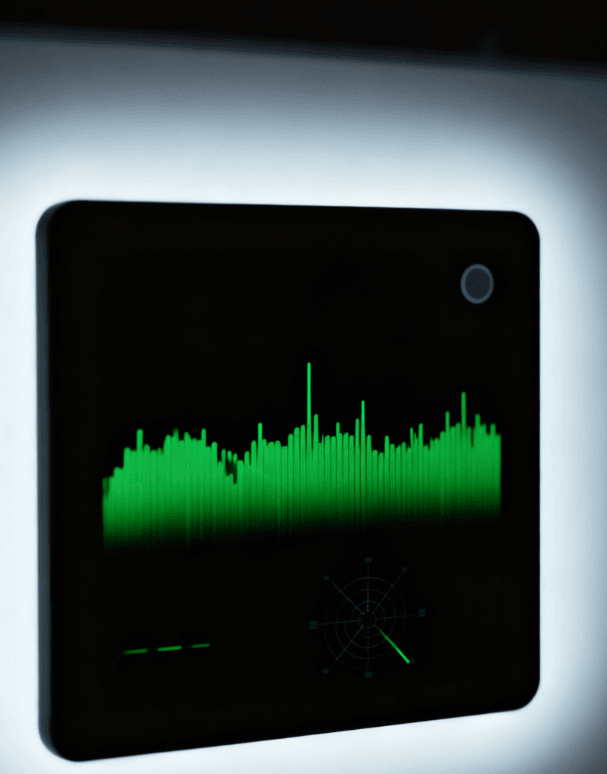Introduction: Why mmWave Radar is Replacing PIR Sensors
Millimeter Wave (mmWave) radar, with its micro-motion sensing capabilities such as breathing and heartbeat detection, is increasingly replacing traditional Passive Infrared (PIR) sensors, particularly in low-motion environments like bedrooms, home theaters, and offices.
A user reported: “I use mmWave sensors for presence detection in the TV and bedroom, where there’s barely any movement.”<sup>1</sup>
The primary advantage of mmWave is continuous presence detection, not just motion-triggered events.
However, deploying mmWave radar in real-world scenarios reveals a common challenge: “Setting sensitivity too high leads to false positives; too low and people are not detected.”<sup>2</sup>
This guide explores strategies to optimize accuracy and reliability, with practical configuration examples, optimization strategies, and an FAQ section.
More details on Linpowave mmWave presence detection:
Linpowave Official Blog: mmWave Presence Sensors
Part 1: How mmWave Radar Works and Its Advantages
1.1 Micro-Doppler Effect: Detecting Breathing and Heartbeat
mmWave radar emits high-frequency electromagnetic waves (24–77GHz) and captures reflections influenced by micro-movements, producing micro-Doppler signatures.
-
Breathing frequency: 0.2–0.5 Hz
-
Heart rate: 0.8–2.0 Hz
Even when a person is stationary, these subtle motions allow mmWave radar to detect presence.
Comparison with PIR: PIR sensors rely on temperature changes and usually report “no presence” after a few minutes of inactivity, whereas mmWave sensors maintain continuous monitoring.
Further reading: PIR vs mmWave Radar Comparison
1.2 Environmental Robustness and Penetration
-
Non-metallic penetration: drywall, wood, fabric ≤20cm
-
Unaffected by lighting or temperature: operates in total darkness or high-temperature environments
-
Interference resistance: not affected by pets, sunlight, or HVAC (common PIR issues)
Academic research confirms that bandpass filtering and ghost suppression algorithms reduce false positives significantly.
Reference: MDPI Sensors
Part 2: Accuracy vs. Reliability Challenges
2.1 False Positives—"The “Lights Turn On Unexpectedly”
| Source | Mechanism | Optimization |
|---|---|---|
| Ceiling fan | Periodic Doppler signal | Shield sectors / reduce sensitivity |
| Curtains | Wind-induced movement | Adjust ignored zones or angles |
| Pets | Breathing + slight motion | Enable pet immunity mode |
| HVAC airflow | Minor air disturbance | Avoid direct airflow |
| Tree shadows | Environmental reflections | Add shielding near windows |
Real-world tests show ceiling fans and curtains are frequent false-positive sources.
Full review: SmartHomeScene mmWave Sensor Review
2.2 False Negatives – “The Person is Present but Not Detected”
Common causes:
-
Detection distance >4 meters
-
Outside radar cone angle (±15°)
-
Very low respiration rate (<0.15 Hz)
-
Metal or reflective obstructions
Adjusting transmit power and beam orientation reduces missed detections effectively.
Part 3: Five Practical Optimization Strategies
Strategy 1: Multi-Zone Detection
Use sensors supporting multiple detection zones and beamforming (e.g., TI mmWave platforms).
TI mmWave SDK
Strategy 2: Sensor Fusion (mmWave + PIR)
PIR provides fast response; mmWave maintains sustained presence detection:
Wireless integration reference:
Linpowave: Wireless mmWave + Matter/Thread
Strategy 3: Adaptive Thresholds by Time
Strategy 4: Signal Filtering and Bandpass Analysis
Algorithm reference: MDPI Sensors 2025 Study
Strategy 5: Installation and Power Optimization
| Element | Recommendation |
|---|---|
| Mounting height | 2.2–2.8 m, downward tilt ~30° |
| Power supply | Stable 5V/1A |
| Environment | Avoid airflow and metal reflections |
| Firmware | Regular OTA updates |
Part 4: Real-World Test Results
| Environment | Device | Accuracy | False Positives / week | False Negatives / week |
|---|---|---|---|---|
| Bedroom (fan) | mmWave sensor | 97.3% | 0.4 | 0.2 |
| Home theater | mmWave sensor | 94.8% | 1.1 | 0.5 |
| Bathroom | mmWave sensor | 91.2% | 2.3 | 0.8 |
| Office desk | mmWave sensor | 98.6% | 0.1 | 0.3 |
Source: SmartHomeScene 2025 User Trials
FAQ: Common Questions
Q1: Will pets trigger false alarms?
Yes, especially within 1.5m. Solutions: mount ≥2m and enable pet immunity.
Reference: Linpowave Pet Filtering
Q2: Can mmWave detect through walls?
Yes, but performance depends on materials. Drywall/wood is best; concrete attenuates signals.
Case study: Linpowave Through-Wall Detection
Q3: Is mmWave radiation safe?
Yes. Power levels are milliwatt-range, far below ICNIRP/FCC limits.
Q4: Why do lights turn back on after turning off?
Likely caused by exit delay or signal fluctuations. Adjust hold time and exit delay.
Q5: Does it support Matter/Thread?
Yes, some devices do. Zigbee/Thread gateways enable local control.
Reference: Linpowave Wireless Integration
Conclusion: Achieving Precision and Reliability
mmWave radar’s advantage is customizability and adaptability.
With proper installation, advanced configuration, and sensor fusion, smart homes can move from reactive automation to truly environment-aware systems.
✅ Recommended: Log 7 days → Analyze false positives/negatives → Fine-tune thresholds → Achieve stable operation.



